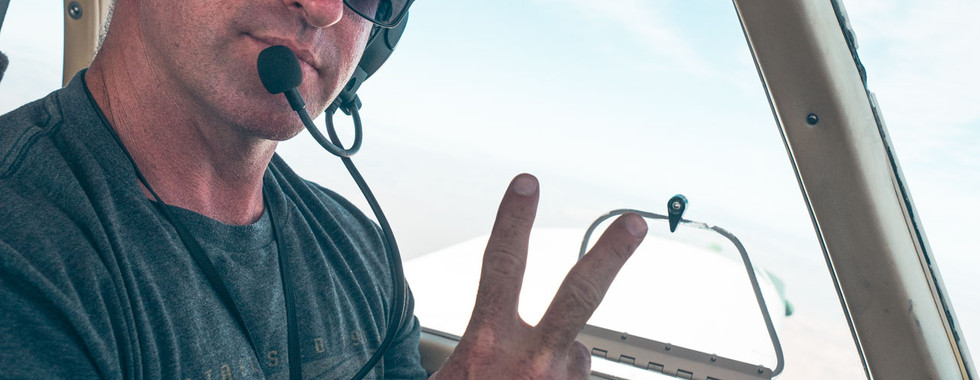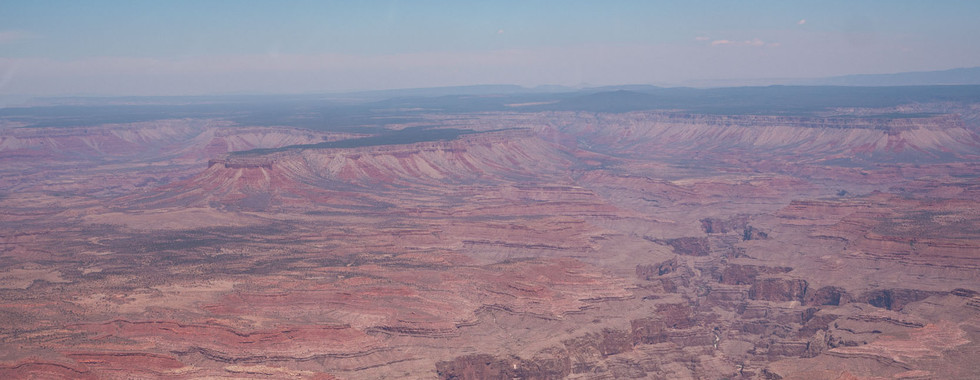Flying Over Grand Canyon: My Cherokee 235 Adventure
- Brian Williams
- Aug 20
- 4 min read

Ten years ago, if you'd told me I'd be piloting my own aircraft over the Grand Canyon, I would have laughed. The idea seemed like something reserved for the truly fearless or wildly adventurous. Yet here I am, sharing an incredible experience that combined my passion for aviation with a meaningful mission—delivering a Think Kindness speech to educators in Kingman, Arizona.
The Journey Behind the Journey
My aviation journey started with a single decision to enroll in flight school. I still remember that first lesson—equal parts excitement and terror as my instructor patiently guided me through the fundamentals. After logging about 50 hours and mastering everything from basic takeoffs to emergency procedures, I began dreaming bigger. Flying over Grand Canyon had always occupied a spot on my aviation bucket list.
Planning the Flight: More Than Just Point A to Point B
The mission was perfect timing. I had a Think Kindness speech scheduled in Kingman, Arizona. Commercial travel would have eaten up 6.5 hours total, but my Cherokee 235 could make the trip in just 3.5 hours. When I researched the route, I discovered Kingman was just a short hop from the Grand Canyon—an opportunity too good to pass up.
Understanding the Grand Canyon Special Flight Rules Area (SFRA) became crucial for safe flight planning. This isn't ordinary airspace—it's a highly regulated zone extending from the surface to 17,999 feet MSL in some areas, designed to protect the canyon's natural environment and ensure aircraft separation.
Navigating Special Use Airspace: Know Before You Go
Flying over Grand Canyon requires understanding specific regulations that govern this protected airspace. The SFRA includes five flight-free zones where all aircraft operations are prohibited below 14,500 feet MSL. However, pilots can navigate through designated corridors—Tuckup, Fossil Canyon, Dragon, and Zuni Point—which conveniently showcase the most spectacular parts of the canyon. Some area's allowing operations above 8,500 feet. (which is what I flew).
High Density Altitude and Fuel Management
The 100-degree temperature that day created significant high density altitude challenges. At Kingman's elevation of 3,449 feet with such heat, the density altitude soared to nearly 7,000 feet. This dramatically affects aircraft performance—reducing lift, impairing propeller efficiency, and decreasing engine power output.
My Cherokee 235's Lycoming O-540 engine, rated at 235 horsepower, would only produce about 200 horsepower at that density altitude. This is where proper fuel management and mixture leaning become critical. I meticulously leaned the mixture for maximum power on takeoff—a procedure that can make the difference between climbing safely and struggling to gain altitude.
Fuel consumption in the Cherokee 235 runs approximately 11-12.5 gallons per hour at 75% power. The aircraft's impressive 84-gallon fuel capacity provides excellent range, but at high density altitude airports, weight management becomes paramount. Sometimes it's better to carry less fuel and maintain lower gross weight than to top off tanks and compromise performance. However, with a nearly 1,400lb useful load, I had no issue with weight and balance.
The Kingman Stop: A Desert Oasis
Kingman Airport (KIGM) proved to be an excellent fuel stop. Air'zona Aircraft Service provided both self-serve and full-service fuel options, with 100LL available 24/7. The small airport offered that welcoming small-town aviation atmosphere where fellow pilots eagerly shared flying stories and local knowledge.
After delivering my Think Kindness speech—part of an organization that has reached over 1,000 schools since 2009—I refueled and prepared for the main event. The temperature hadn't cooled much, so climbing back into that sun-baked cockpit required mental preparation for the density altitude challenges ahead.
Soaring Over the Grand Canyon

As I approached the canyon, the landscape transformed dramatically. The vast expanse materialized below, and I was struck by its sheer magnitude and beauty. The vibrant rock formations created stunning contrasts with shadows cast by the late afternoon sun. This was flying over Grand Canyon at its finest—a dream realized through careful planning and respect for the special airspace.
I took my time circling key landmarks, staying within the designated corridors while maintaining proper altitudes. The Dragon and Zuni Point corridors offered breathtaking views while keeping me safely separated from other aircraft and out of the flight-free zones. Every moment felt like a gift, validating years of training and preparation.
Lessons Learned: Beyond the Spectacular Views
This flight reinforced several critical aviation principles. First, thorough preflight planning is non-negotiable when dealing with special use airspace and challenging conditions. Second, understanding your aircraft's performance limitations at high density altitude can mean the difference between a successful flight and a dangerous situation.
The Cherokee 235 proved itself as a reliable workhorse, living up to its reputation for exceptional useful load and cross-country capability. While it may not be the fastest aircraft in its class, its ability to carry substantial weight and operate from challenging airports makes it an ideal choice for mountain flying.
Final Approach to Dreams
Flying over Grand Canyon represents more than just aviation achievement—it's proof that dreams are worth pursuing regardless of how distant they seem. With determination, proper training, and respect for aviation's demands, seemingly impossible goals become achievable realities.
This experience reminded me why I fell in love with flying in the first place: the freedom, the challenge, and the perspective that only comes from seeing the world from above. Whether you're planning your own Grand Canyon flight or pursuing any aviation dream, remember that preparation and persistence are your best co-pilots.
For anyone considering their own Grand Canyon flying adventure, I encourage you to take that first step. Study the regulations, understand the challenges, respect the airspace, and prepare thoroughly. With the right planning and a healthy dose of adventure, you too can transform dreams into reality at 11,500 feet above one of nature's greatest masterpieces.

Brian Williams is a CFI/CFII based in Reno, Nevada, specializing in primary flight training and mountain flying instruction. With extensive experience training students in the diverse Northern Nevada environment, he provides practical insights to help aspiring pilots make informed training decisions.


































Comments